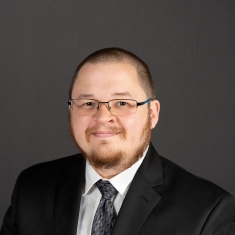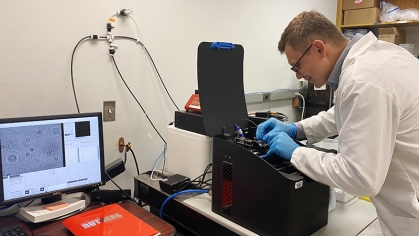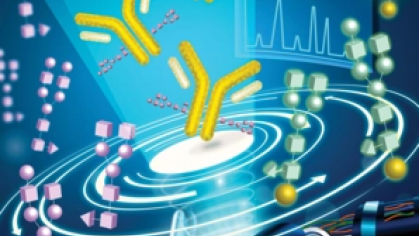Looking for “Aha” Moments
CBE teaching instructor Nicholas Corrente helps students click with chemical engineering
As a doctoral student in the School of Engineering Department of Chemical and Biochemical Engineering (CBE), Nicholas Corrente was a department teaching assistant and an instructor for the undergraduate Chemical Engineering Thermodynamics I course. This experience led him to pursue a post-doctoral academic career.

Today, as a new CBE teaching instructor, he is teaching courses on material and energy balances and computational methods. “I really look forward to coming to work every day and engaging with the amazing students we have in our department.,” he says.
“I’m very fortunate that I was able to teach while still being a PhD student, so the transition to a faculty role has been smooth so far,” says Corrente who is thoroughly enjoying his new role. “I’m now working on figuring out how I can give back to the department that has provided me with such great opportunities for intellectual and professional growth.”
Working to instill a love for CBE in his students, he confesses, “I live for that ‘aha’ moment when a student finally gets a challenging topic. Chemical engineering is hard, and we cover some difficult and abstract subjects. It’s always great to see understanding in a student’s eyes after something finally clicks.”
Maintaining a Research Focus
As a faculty member, Corrente continues to build on his doctoral study of the adsorption in flexible nano-porous materials life by developing computational models to predict adsorption processes of these materials and how they might deform during these processes.
“We encounter nanoporous materials every day, though we may not realize it,” he notes. “The silica desiccant that you find in a box of new shoes in nanoporous – it removes moisture from the air through the adsorption of water vapor inside its nanopores. Similarly, the carbon substrate inside air or water filters removes pollutants by trapping them inside their nanopore matrices.”
Corrente is a co-author of recent papers published in Carbon 2023 and Carbon 2024, that he explains “reported methods and codes for determining the structural properties of activated carbons,”
Telling a Story Through Research and Teaching
Corrente, who worked as a portrait, wedding, and event photographer before beginning his Rutgers Engineering doctoral studies, credits his photographic expertise with being able to tell a story, whether as a teacher or a researcher.
“In many ways, teaching is the same as planning a photo shoot: I try to teach like I’m telling a story, where each new piece of information follows from the previous information,” he explains.
He insists that research is also about telling a story. “Merging both technical and creative aspects of photography results in a compelling visual story, A significant part of mentoring undergraduate researchers involves teaching the necessary technical skills, such as coding or running simulations.
“Once they master these skills, which are akin to a photographer’s understanding of camera settings, they can apply them creatively to tackle research problems – just as a photographer is able to capture a beautiful wedding scene.’
While photographers can build personal portfolios of expressive, impactful images, research offers a unique benefit to Corrente. “The beauty of research is that not only do we get to tell a story, but we get to add to that story by answering questions that don’t yet have answers,” he says.


